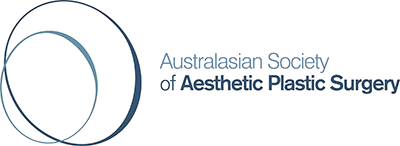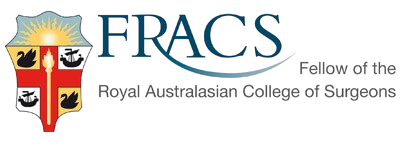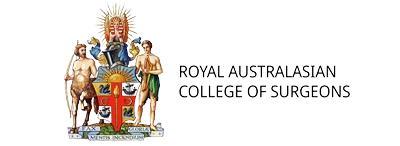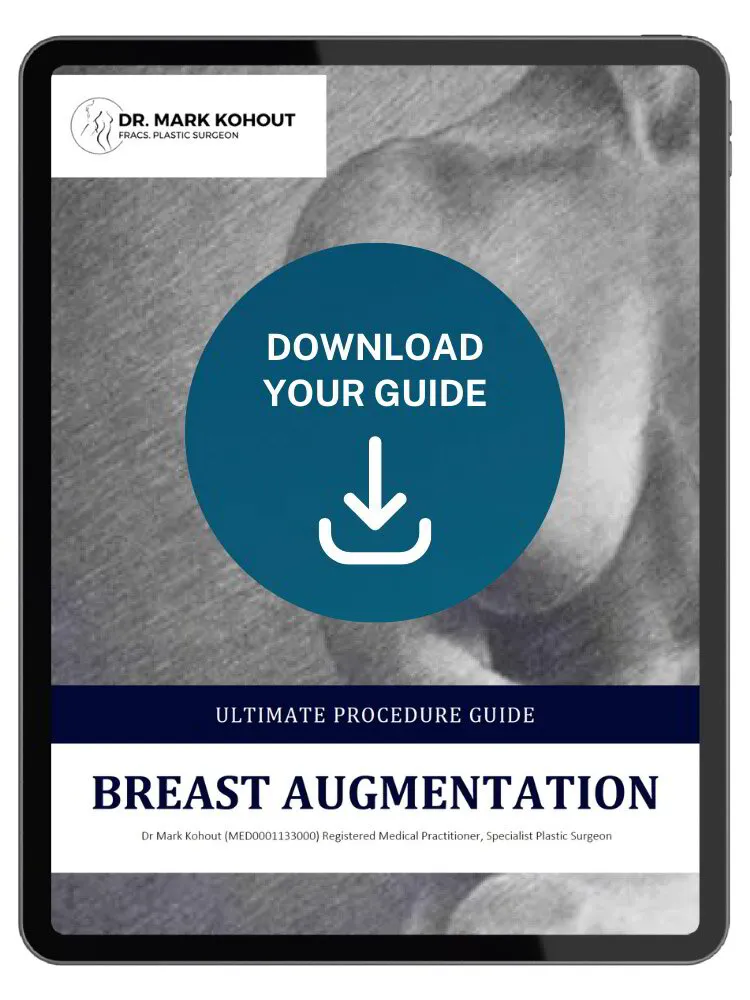Table of Contents
Introduction
Breast augmentation, also known as augmentation mammoplasty, is among the most commonly performed cosmetic procedures worldwide. For individuals considering this surgery, the decision-making process encompasses medical, psychological, and aesthetic dimensions. Engaging in informed discussions with a qualified surgeon is vital to align expectations with realistic outcomes and ensure the safety and optimal results of the procedure.
This guide provides a helpful list of the questions to ask your surgeon, the ethical considerations and detail involved in undergoing breast augmentation.
Understanding the Procedure: Anatomy and Implant Options
Breast augmentation involves the surgical placement of implants to enhance breast volume, shape, and symmetry. The procedure may be conducted for aesthetic reasons, such as addressing dissatisfaction with breast size, or reconstructive purposes, including post-mastectomy restoration.
✓ Implant Types
- Silicone Implants: These implants are filled with a cohesive silicone gel, which mimics the natural feel of breast tissue. They are pre-filled, requiring slightly larger incisions. Silicone implants are FDA-approved and widely used due to their aesthetic appeal.
- Saline Implants: Filled with sterile saline solution, these implants can be adjusted intraoperatively for precision in achieving symmetry. They are often associated with a firmer texture compared to silicone alternatives.
- Gummy Bear Implants: Form-stable and often tear-drop shaped, these implants provide additional stability and are less prone to folding or rupture.
- Fat Transfer Augmentation: Autologous fat grafting involves harvesting fat from another area of the body via liposuction and injecting it into the breasts. This technique is suitable for those seeking subtle enhancements but may require multiple sessions.
✓ Implant Placement
- Subglandular Placement: The implant is positioned above the pectoral muscle but beneath the breast gland. This approach often yields a more natural contour for individuals with ample breast tissue.
- Submuscular Placement: The implant is placed under the pectoral muscle, reducing the risk of capsular contracture and rippling, particularly in patients with minimal native tissue.
✓ Incision Techniques
- Inframammary Fold (IMF): The incision is made under the breast fold, providing excellent control for implant placement and concealment of scars.
- Periareolar: The incision follows the lower edge of the areola, blending scars into the natural transition of pigmented skin.
- Transaxillary: This technique utilises an incision in the armpit, leaving the breasts free of scars but requiring advanced surgical expertise.
Comprehensive Questions for Your Surgeon
✓ Qualifications and Experience
- Are you a specialist plastic surgeon registered with the Australian Health Practitioner Regulation Agency (AHPRA)?
- How many breast augmentation procedures have you performed, and what is your complication rate?
- Do you hold membership in professional bodies, such as the Australian Society of Plastic Surgeons (ASPS)?
✓ Procedure-Specific Questions
- What implant type, size, and shape would you recommend for my anatomy and desired outcome?
- How will you determine the optimal placement of the implants (submuscular vs. subglandular)?
- What are the short-term and long-term risks associated with the procedure?
✓ Recovery and Long-Term Considerations
- What is the expected timeline for recovery, and what restrictions should I anticipate postoperatively?
- How will ageing, pregnancy, or weight fluctuations affect the appearance of my augmented breasts?
- What is the protocol for monitoring and replacing implants over time?
✓ Complications and Mitigation Strategies
- How do you address potential complications, such as capsular contracture, implant rupture, or infection?
- What percentage of your patients have required revision surgeries?
- What measures will you take to ensure my safety during the procedure?
Ethical and Psychological Considerations
Body Dysmorphic Disorder (BDD) Screening
Surgeons must be adept at recognising psychological conditions such as BDD, characterised by obsessive preoccupation with perceived physical flaws. Identifying patients who may benefit from psychological intervention rather than surgery is a professional and ethical obligation.
Motivations for Surgery
Individuals should introspectively evaluate their motivations. Surgeons are trained to assess whether a patient’s desire for augmentation stems from personal goals or external pressures, such as societal standards or partner expectations.
Informed Consent
Transparent communication of risks, benefits, and alternatives ensures informed consent, a cornerstone of ethical medical practice. Patients must have sufficient time to process information and pose questions.
Postoperative Dynamics: Recovery and Lifestyle
Immediate Recovery Phase
- Pain and Swelling: Mild to moderate discomfort, controlled with prescribed analgesics, is typical in the initial postoperative period.
- Mobility Restrictions: Patients are advised to limit upper body movement and avoid heavy lifting for four to six weeks.
- Compression Garments: Wearing a surgical bra aids in reducing swelling and stabilising implants during healing.
Long-Term Follow-Up
Routine follow-ups are crucial to monitor implant positioning, detect early signs of complications, and maintain optimal aesthetic outcomes. Annual check-ups, including imaging such as ultrasounds or MRIs, are recommended to assess implant integrity.
Breast Augmentation Before and After Photos
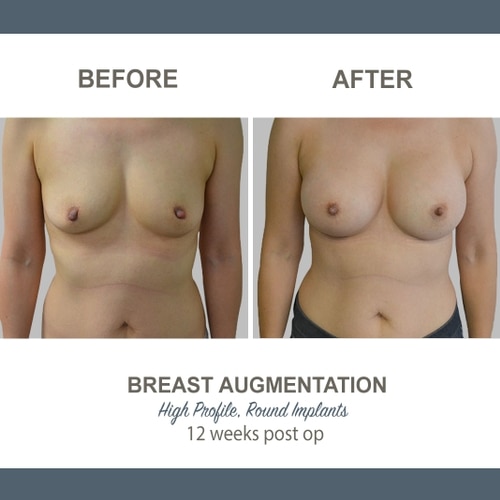


Advanced Considerations in Breast Augmentation
✓ Breast Implant-Associated Anaplastic Large Cell Lymphoma (BIA-ALCL)
Although rare, BIA-ALCL is a recognised complication associated with textured implants. Patients should discuss the risks with their surgeon and consider smooth implants or alternative techniques if concerned.
✓ Breastfeeding and Pregnancy
While most augmentation techniques preserve lactational capabilities, factors such as incision placement and glandular disruption can impact breastfeeding. Future pregnancies may also alter breast aesthetics, necessitating revision surgery.
✓ Cultural and Societal Influences
Cosmetic surgery is influenced by cultural perceptions of beauty and societal pressures. Surgeons and patients must engage in discussions that deconstruct these norms and emphasise individualised, patient-centred care.
✓ Ethical Advertising and AHPRA Compliance
Under AHPRA regulations, cosmetic surgery advertising must:
- Avoid exaggerating outcomes or minimising risks.
- Refrain from using testimonials, which may create unrealistic expectations.
- Provide balanced, evidence-based information about the procedure.
Adherence to these guidelines ensures patient safety and informed decision-making.
Final Thoughts: Empowering an Informed Decision
Breast augmentation is a multifaceted procedure that requires a confluence of aesthetic sensibility, surgical expertise, and ethical responsibility. By asking the right questions, understanding the nuances of the procedure, and reflecting on personal motivations, patients can make informed decisions that prioritise their health and well-being.
The key to a successful outcome lies in an open, transparent relationship with a qualified surgeon and a comprehensive understanding of the surgical process. With the right preparation and professional guidance, breast augmentation can be a fulfilling journey toward achieving one’s aesthetic and reconstructive goals.

Dr. Mark Kohout
Dr. Mark Kohout is a highly qualified specialist plastic and reconstructive surgeon with over 25 years of experience, based in central Sydney.
Trained in Great Britain, Australia, and the U.S., he co-founded Australia Plastic Surgery. Specializing in breast, genital, and male breast surgeries, he is a certified member of the Australian Society of Plastic Surgeons (ASPS) and the Royal Australian College of Surgeons (RACS).
Dr. Kohout has appeared in media like The Biggest Loser and has published several articles in his field.



Accreditations
